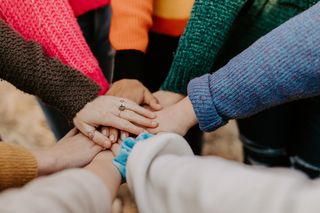Interest in social and emotional learning (SEL) has spiked in the post-pandemic world. In 2022, Google searches for SEL reached an all-time high, according to CASEL, a nonprofit organization dedicated to promoting SEL.
To address this increased interest, CASEL has launched a free one-hour online learning course: An Introduction to Social and Emotional Learning. The virtual course aims to help teachers, parents, and other stakeholders learn more about SEL.
I recently completed the self-paced course in under an hour and received the certificate that it provides. The course is geared toward K-12 educators and parents of school-aged children. As a writer and adjunct professor, I don’t fall into either category but still found the course engaging and helpful in thinking about the ways I interact with students and colleagues.
The course provides a great and concise overview of what SEL is and equally as important what it is not. The self-paced nature and the efficient and informative manner in which information is provided make this an ideal course for perpetually busy educators.
Here are five things I learned.
1. CASEL's Online SEL Course: What SEL Is
While I came into the course with a good understanding of what SEL is, the clear definition CASEL provides is still helpful. Here it is:
Social and emotional learning (SEL) is a lifelong process of developing skills that help us to be successful in school and all parts of our lives, such as communicating effectively, building relationships, working through challenges, and making decisions that benefit ourselves and others. The term is also often used to describe how we help students learn and practice these skills in supportive environments.
2. SEL’s Five Core Skill Areas or Competencies
CASEL describes SEL in terms of five core skill areas or competencies. The course reading defines these as:
Self-Awareness is how we think about ourselves and who we are.
Self-Management is about managing our emotions, thoughts, and actions as we work toward goals.
Social Awareness is how we understand others, how we learn to take on different perspectives and have empathy for people, even those who are different from us.
Relationship Skills are how we get along with others and how we form lasting friendships and connections.
Responsible Decision-Making is how we make positive and informed choices. community.

3. Four Key Settings That Shape Emotional Development
CASEL’s framework for school-wide SEL includes four key settings that shape social and emotional development. These are:
- Classrooms
- School in general
- Families and caregivers
- The community at large
4. What SEL Is Not
In some circles, SEL has become a politically charged term but these attacks on SEL are often based on a misunderstanding of what it is. That’s why I found this course portion so helpful and important. It made clear that SEL is not:
- A distraction from academics. In fact, SEL training has been shown to increase academic performance in multiple studies.
- Therapy. Though SEL helps build skills and relationships that promote healthy well-being, it is not meant to take the place of healthcare therapy.
- SEL helps students share and understand different perspectives and share ideas. It does not teach one perspective or way of thinking.
5. I’m Already Teaching SEL
The course contains a number of scenarios for teachers, parents, and school leaders on how they might respond to potentially difficult situations with students. These are helpful to go through. As an educator, I found the advice, which focuses on understanding different perspectives and hearing student concerns, validated my approach.
The course also provides an opportunity for reflection on the ways in which many of us are already using SEL in our classes and lives. I found this particularly helpful as it demystified the process and made me realize that incorporating SEL into my class isn’t something that requires years of training. In fact, it taught me that I’m already using SEL in many ways without realizing it. This realization helps me see how I can be more intentional about building more SEL elements, such as self-reflection and meaningful conversation between students and myself, into my teaching and professional practices. That’s a pretty great takeaway for a free course that took less than an hour to complete.


